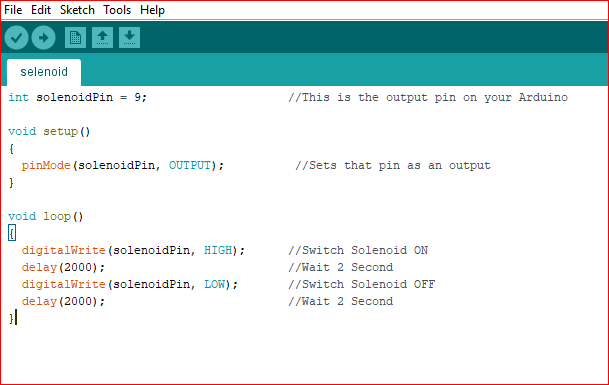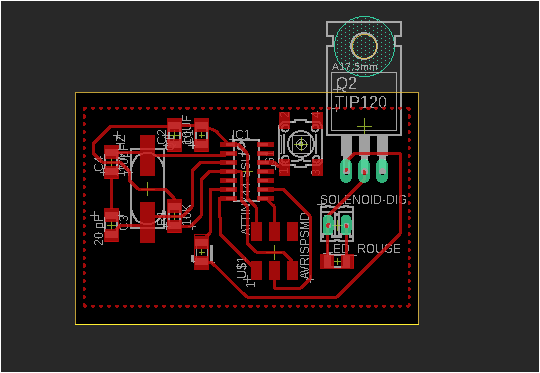Group assignment
Link for the group assignment
Individual assignment
Discovering the output device
Again this week I want to do something related to my final project. I will use a Solenoid as an output device.
So what's a Solenoid
A solenoid is a type of electromagnet, the purpose of which is to generate a controlled magnetic field through a coil wound into a tightly packed helix. The coil can be arranged to produce a uniform magnetic field in a volume of space when an electric current is passed through it.

The core of a solenoid is usually made of two sections, a movable actuator, or plunger, and a fixed end core or back stop.The efficiency of a solenoid is a factor of mechanical geometry, electrical configuration and magnetic permeability of core, plunger and housing.The plunger is free to travel in the center of winding in a linear direction. When the coil is energized by the electric current "i ", a magnetic force is created between plunger and end core, causing the plunger to travel. The higher the permeability of steel used, the better the performance.




